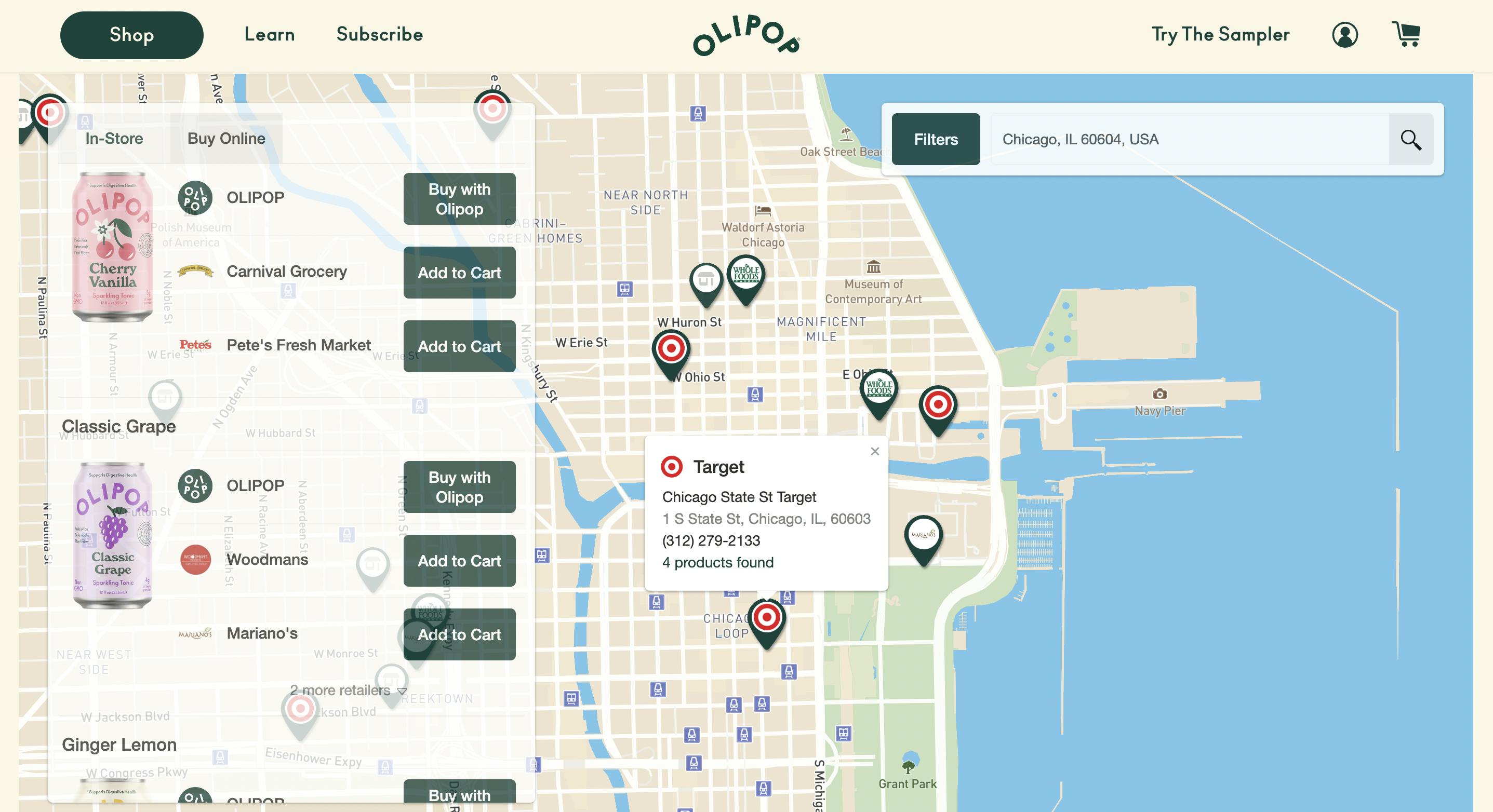It’s no longer breaking news that customers want multiple ways to shop. Whether it’s through online ordering with curbside pickup or purchasing directly from a retailer, meeting the omnichannel demands of the modern consumer requires brands to support several buying options in the most useful, convenient, and accurate way.
In other words, we want our cake and we want to eat it too, but we also want to know exactly where we can locally buy the cake (preferably with multiple retailers listed so we can choose our favorite bakery and have a curbside or ship-to-home option available).
The most common way to inform customers of where to find a brand’s products is via a store locator on their website. Up until now, store locators have caused more headaches than added value for both consumers and brands:
- Old data – The inventory data available for store locators is typically a couple of weeks old at minimum and is based on retailers’ point-of-sale (POS) data. Therefore, if a brand’s product is rung up at a register within the last couple of weeks, the item could still show up as in-stock at that location. This results in customer frustration when arriving at a retail store and attempting to purchase (read: loss of sales). This also requires dedicating internal resources toward manually managing inventory and maintaining an accurate store locator.
- Changing inventory – Retailers’ inventory changes rapidly, particularly when third-party distributors are involved. Brands working with distributors aren’t often aware of the full list of locations currently stocking their products, which adds a layer of complexity to managing a store locator tool. This requires another layer of human intervention to constantly monitor and update the active retailers.
- Lack of insights – Early iterations of store locators informed customers where they could buy the product, but provided minimal benefit. They weren’t shoppable and didn’t return any data or insights. Having a store locator on brands’ websites checked a box, but didn’t lead customers to take action and make a purchase. In turn, these store locators captured zero insights into whether or not a customer actually utilized the information to find and buy a product. Driving traffic to a store locator page was essentially a path to nowhere, offering little convenience to customers in terms of shoppability, and little to no data for marketing teams to use in future campaign optimization.
Pear Commerce addresses each of these pain points, offering an actionable store locator with a real-time inventory display.

With Pear’s store locator, consumer packaged goods (CPG) brands have an opportunity to provide the best possible experience for shoppers, displaying preferred, stocked-up retailers nearby (with an option to add directly to their carts and purchase!), while collecting data from consumer actions to inform marketing decisions. Here’s how it works:
1. Pear adds shoppability to store locators, connecting your products to every retail e-commerce cart automatically.
You provide us with a list of universal product codes (UPCs) and our tech will do the rest. We scan over 2,000 retailers, collecting inventory counts for your products at every available location.
After implementing our store locator or embedding a store locator widget on your preferred landing page, customers are able to view which of your products are in-stock at their local retailers via geolocation. Our real-time inventory scanning prevents an out-of-stock item from ever appearing available for purchase. (View this feature in action here.)
With built-in shoppability for every retailer, customers can not only see where products are in-stock nearby, but can now add those products directly to their cart from your store locator. This creates a seamless customer shopping experience, converting impulse add-to-carts into conversions.
2. Pear returns full-funnel, attributable sales data.
Your easy-to-use Pear dashboard reports at the top of the funnel all the way down to the conversion level, providing you with real-time performance data. From page loads to individual transactions, you can easily track retail e-commerce sales and quantify return on investment – data that was previously only attainable for direct-to-consumer brands.
By providing you with data down to the UPC and individual purchase level, you’ll unlock more insights into consumer behavior than previously possible. Using those insights to quickly optimize campaigns and capture more sales breaks down barriers to business growth.
3. Pear integrates with your ad platforms to build digital audiences and automatically improve your ads.
By leveraging the full-funnel data returned from your Pear store locator, your team can make performance marketing-level campaign optimizations.
Creating custom audiences from top-funnel visitors, mid-funnel shoppers adding to cart, and bottom-funnel purchasers completing a transaction at one of your retailer partners, enables the targeting of individuals most likely to buy your products. Your ad platforms’ machine learning capabilities then build lookalike audiences based on customers with similar interests and purchasing behavior, automatically optimizing your ads.
Contact Pear to learn how to eliminate manual updates on your store locator, provide a real-time view into inventory and retailers stocking your products, and use your shoppable store locator’s data for accelerated retail e-commerce growth.
Find Pear Commerce on RangeMe Services here.

